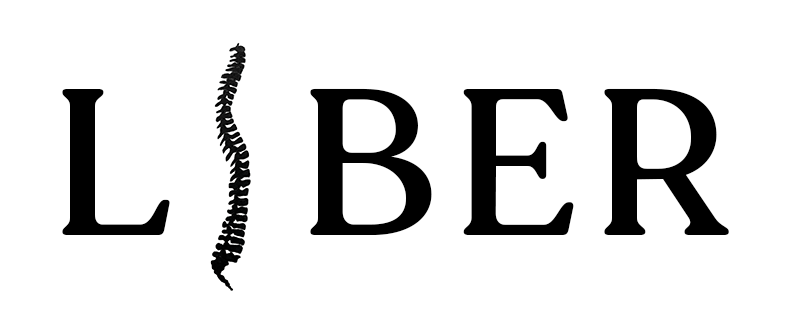In Sync
I worked a bunch of minimum wage jobs in college, hard-selling suede bomber jackets at Wilson’s Leather, guzzling Frangelico-flavored coffee while reading Backlash at a failing coffee shop, and nude modeling for figure drawing classes. That last one paid twice the hourly wage of the others, but the real pay-off was the impact that holding a pose (nude, for two to three hours, in front of my peers) had on me as a young, repressed Midwestern weirdo. Initially, I struck what I hoped was a hot pose, but sucking in my belly and looking basic was hard to sustain and, as I soon learned, boring to draw. As I relaxed into more visually complex positions, I experienced being looked at very carefully while naked in a way that had nothing to do with being ranked or sexualized or “objectified,” that workhorse of my newly acquired feminist vocabulary. While the long journey remains unfinished, I took the first step toward making friends with my body (and other bodies) back in the early 1990s, as a life model in Appleton, Wisconsin.
Coincidentally, Charis has modeled for the past few years, often at the New York Studio School on West 8th street, just around the corner from LIBER HQ. She is far more contemplative about modeling’s particularity than I was. Her extensive notes on that work, and the research it prompted for her essay in this issue, help illuminate the essential yet marginal place of models in art history. What I took from reading it (or remembered anew) is the collaborative aspect behind creation—whether you’re making a book, a painting, or a baby.
I’m buoyed by arbitrary synchronicities like finding out Charis and I both worked as models. Especially after these last few years of feeling like I’m losing the trail of breadcrumbs that has, thus far, kept me from getting lost in New York and middle age. This past year or so of “getting back to normal” has been its own parade of demoralizing and pointless experiences. For example, I resumed producing and promoting events—I used to be good at this!—but despite the content or effort, they have turned out tiny audiences. Instead, the occasional feelings of “YES!” (or bursting the grape, as Charis has it in the piece you’ll soon read) have all had to do with connection—some tiny thread, tethering me to something.
One example of how these connections unfurl: May 15 is my birthday, my sister Jessica’s birthday, and my college bestie Marianne’s birthday. Cecily Brown, the British painter whose show at the Met we review in this issue, was born on May 15, too, as was the curator of her show. A trivial coincidence, sure, but also a tiny tether, a crumb. Through Cecily Brown—whom I met because our kids are in school together—I learned about an odd, electrifying new memoir by fashion-and-punk arbiter Young Kim about an affair that was more of an art project, with an older womanizer unwittingly playing her muse (A Year on Earth with Mr. Hell, also reviewed in this issue). Kim, now on my radar, was the perfect person to review a new translation of stories by the avant-garde icon Izumi Suzuki.
To shake my interior life awake, two things have proven crucial: art and community—and thinking more seriously about art these last two months has revived my sense of community. Discussing John Berger’s theory of the “gaze” sparked a memory of an Elizabeth Wurtzel essay titled “The Female Gaze,” published in Surface Tension (Simon & Schuster, 1996) and edited by Meg Daly, a friend from my ’90s/third-wave days. On a whim, I googled her (last point of contact: 2005 or so) and our ensuing phone call spawned her essay on Tracey Emin’s My Bed. I assigned Working Girl to a writer Michelle Tea recommended, Tara Perkins, and during our call to discuss the piece, she mentioned we had met twenty-five years ago, in Olympia, at a DIY extravaganza. (The conference, called Foxfire, was orchestrated in part by Nomy Lamm, whose exquisite early-nineties zine i’m so fucking beautiful is on my desk as I type.) Talking to Tara Perkins opened a drawer of memories that included a live demonstration of how to insert a DivaCup. By the time we were putting this issue to bed, these conversations—about art, history, menstrual cups—had led me back to ground I recognized.
Another random coincidence (or mystical synchronicity, depending on your taste): In 1992 (while I was modeling in Wisconsin), Cecily Brown attended the New York Studio School for a term. Yes, the same school where Charis now models, and one of the first institutions to subscribe to LIBER, thanks to one faculty member: the sculptor Jock Ireland. I asked him why he’s championed our publication. His answer, in part: Charis—but also making connections. He said that while he didn’t know Charis well at all, they talked once and he learned that she’d studied with his friend Anne Carson, someone whom he hadn’t seen in years but was very important to him all the same. “I didn’t even talk to Charis about Anne,” he told me, “but that very slight connection is somehow more than slight, somehow important. A little exchange can mean so much.”
—Jennifer Baumgardner
New York, April 2023

